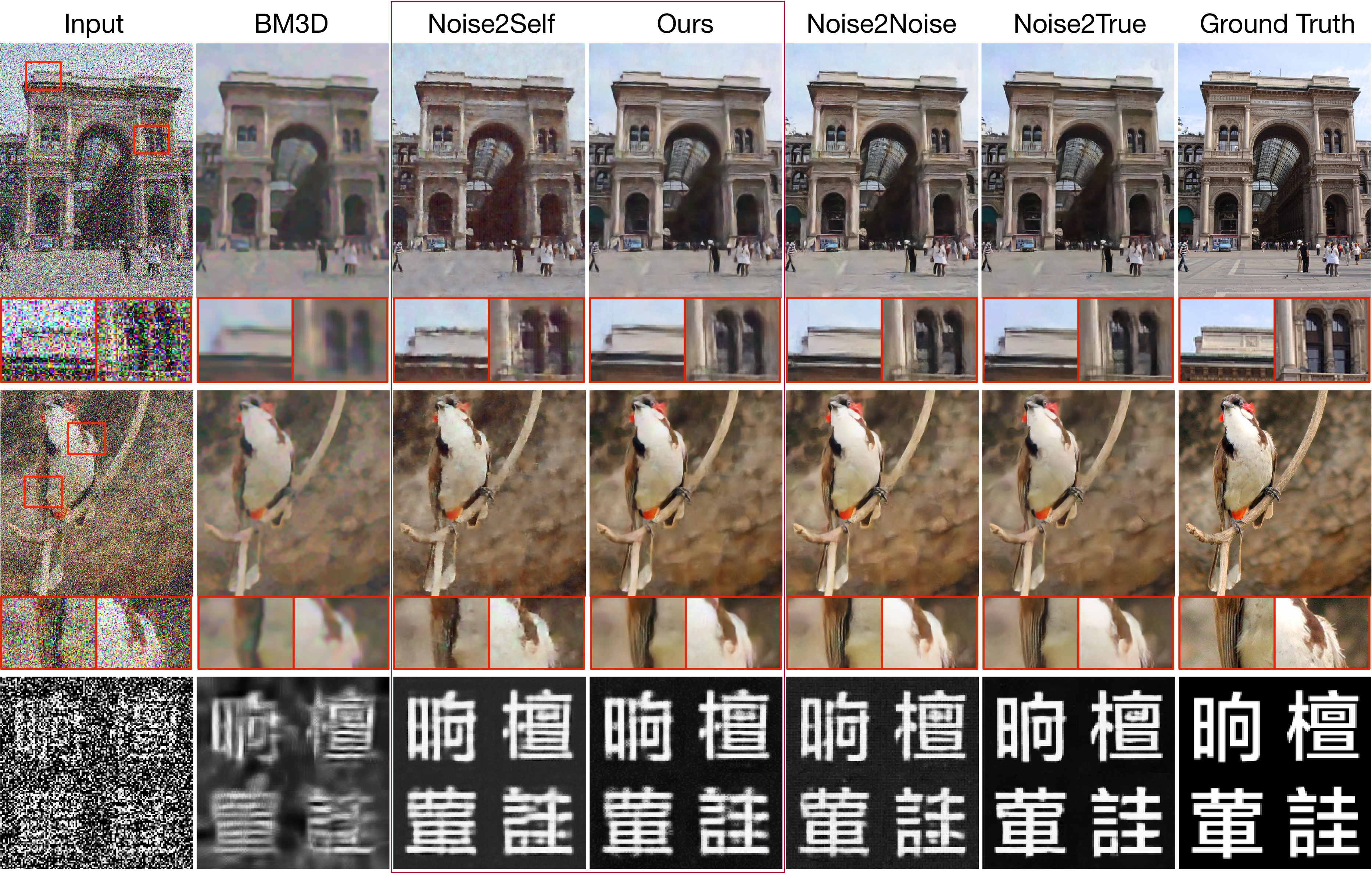Official TensorFlow implementation for the paper presented on NeurIPS 2020 titled "Noise2Same: Optimizing A Self-Supervised Bound for Image Denoising".
- jupyter
- python == 3.7.2
- tensorflow >=1.10 & <=1.15
- scipy
- skimage
- tifffile
We uploaded the datasets used in our experiments and the model checkpoint files to the google drive here. You can download the files and put them in the folders Denoising_data and trained_models. More details about the dataset construction and the source of data can be found under Denoising_data.
We have provided four examples in Jupyter Notebook that can reproduce our results in the paper. Once you have downloaded the dataset (and the pretrained chechpoints if you want to skip training), you can simply go through the notebooks for reproduction.
You can follow the examples in Jupyter Notebook for denoising with RGB images, grayscale images and 3D images.
from models import Noise2Same
model = Noise2Same(model_dir, model_name, dimension, in_channels)
where model_dir and model_name will specify the path to your checkpoint files, dimension refers to the dimension of image (2 or 3) and in_channels refers to the number of channels of input images.
model.train(X, patch_size, validation=X_val, batch_size, steps)
where X and X_val are the noisy images for training/validation of shape [n_samples, width, length, n_channels] and of type float32, patch_size specify the size to crop input images to training patches. Note that the input image should be normalized before input for training.
-
For prediction of single image,
model.predict(img[, im_mean, im_std])where
imgis the noisy image for prediction,im_meanandim_stdare the mean and standard deviation. Ifim_meanandim_stdare not specified, it will useimg.mean()andimg.std()by default. -
For prediction of batched images (and you have enough GPU memory),
model.batch_predict(images.astype('float32'), batch_size[, im_mean, im_std]) -
For extremely large images, e.g. CARE 3D images,
model.crop_predict(image, crop_size, overlap[, im_mean, im_std])
You can follow the pseudocode below to build the Noise2Same model.
Given the noisy images images, the masked noisy images masked_images and masking map mask with masked locations being 1 and other 0,
net = YourNetwork()
# The two net() below should share their weights
out_raw = net(images)
out_masked = net(masked_images)
l_rec = reduce_mean((out_raw - images)^2)
l_inv = reduce_sum((out_raw - out_masked)^2 * mask) / reduce_sum(mask)
loss = l_rec + 2 * sqrt(l_inv)
@inproceedings{xie2020noise2same,
author = {Xie, Yaochen and Wang, Zhengyang and Ji, Shuiwang},
title = {Noise2{S}ame: Optimizing A Self-Supervised Bound for Image Denoising},
booktitle = {Advances in Neural Information Processing Systems},
pages = {20320--20330},
volume = {33},
year = {2020}
}
You can create a web-based demo to run inference by running the demo.py file, which uses the gradio Python library.
Here is a live demo: https://gradio.app/g/Noise2Same
The live demo uses the model pre-trained on 20,000 noisy images generated from ImageNet ILSVRC2012 validation dataset.
We thank Abubakar Abid for building this awesome web demo for us!


